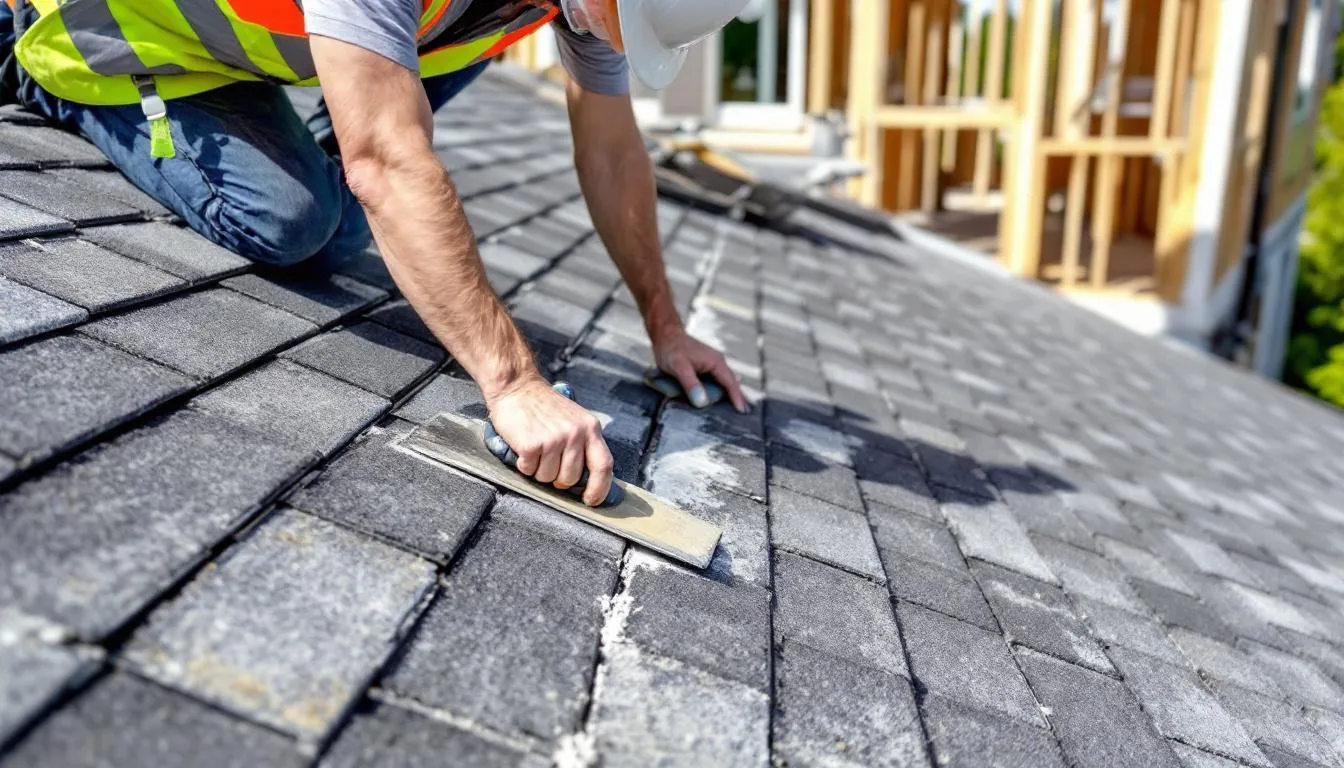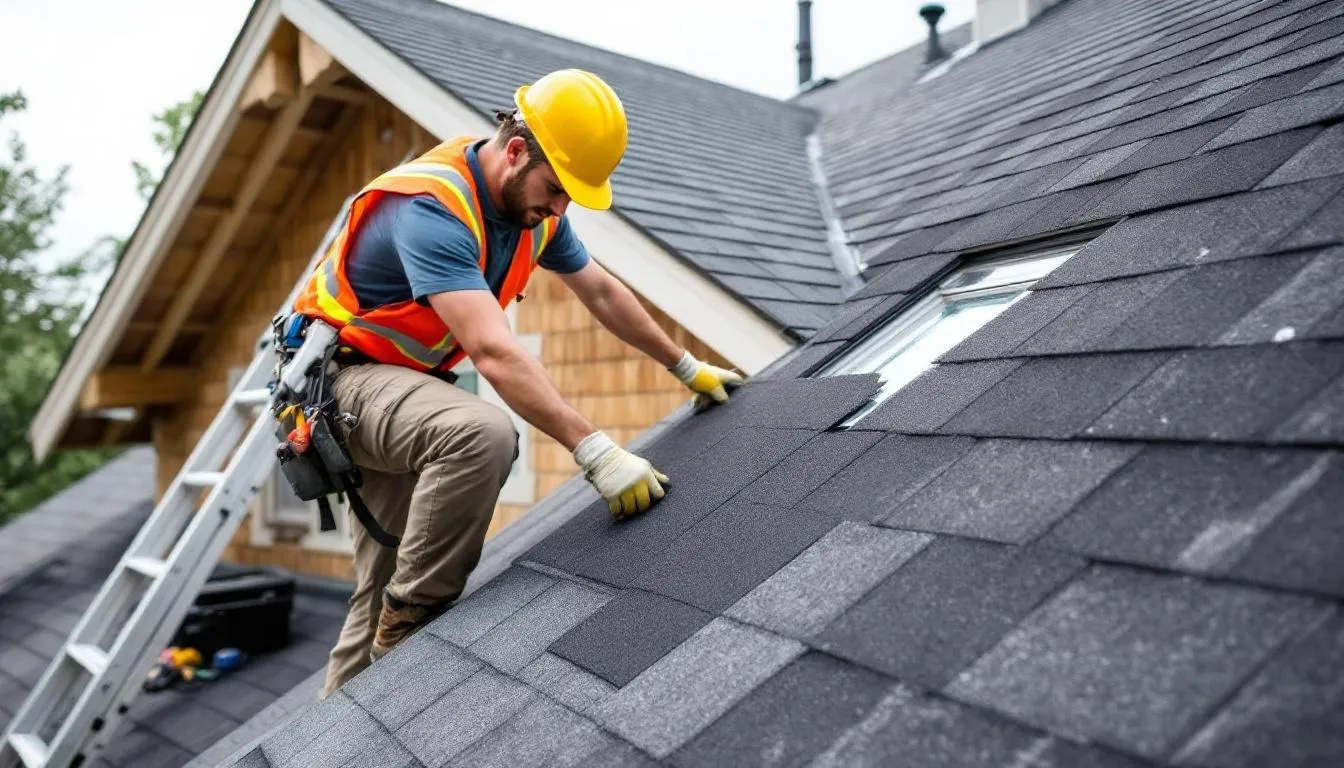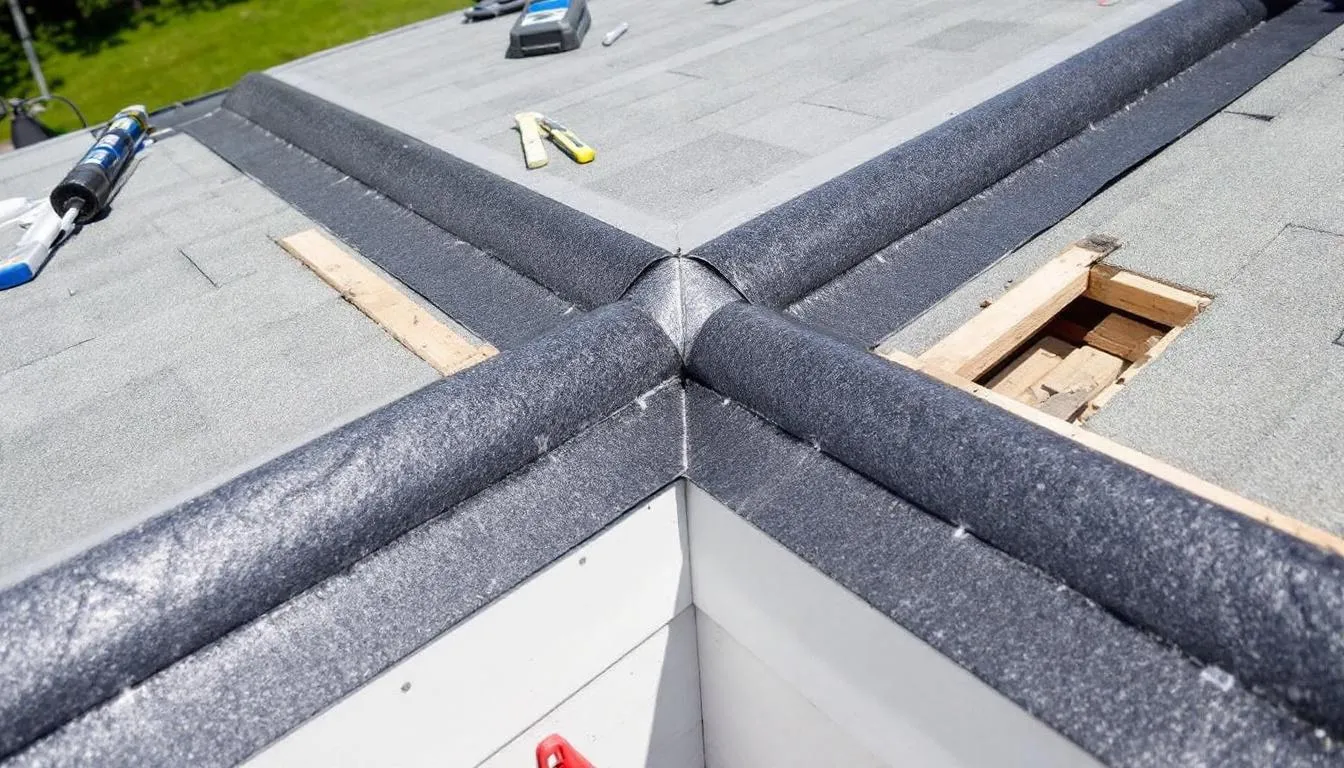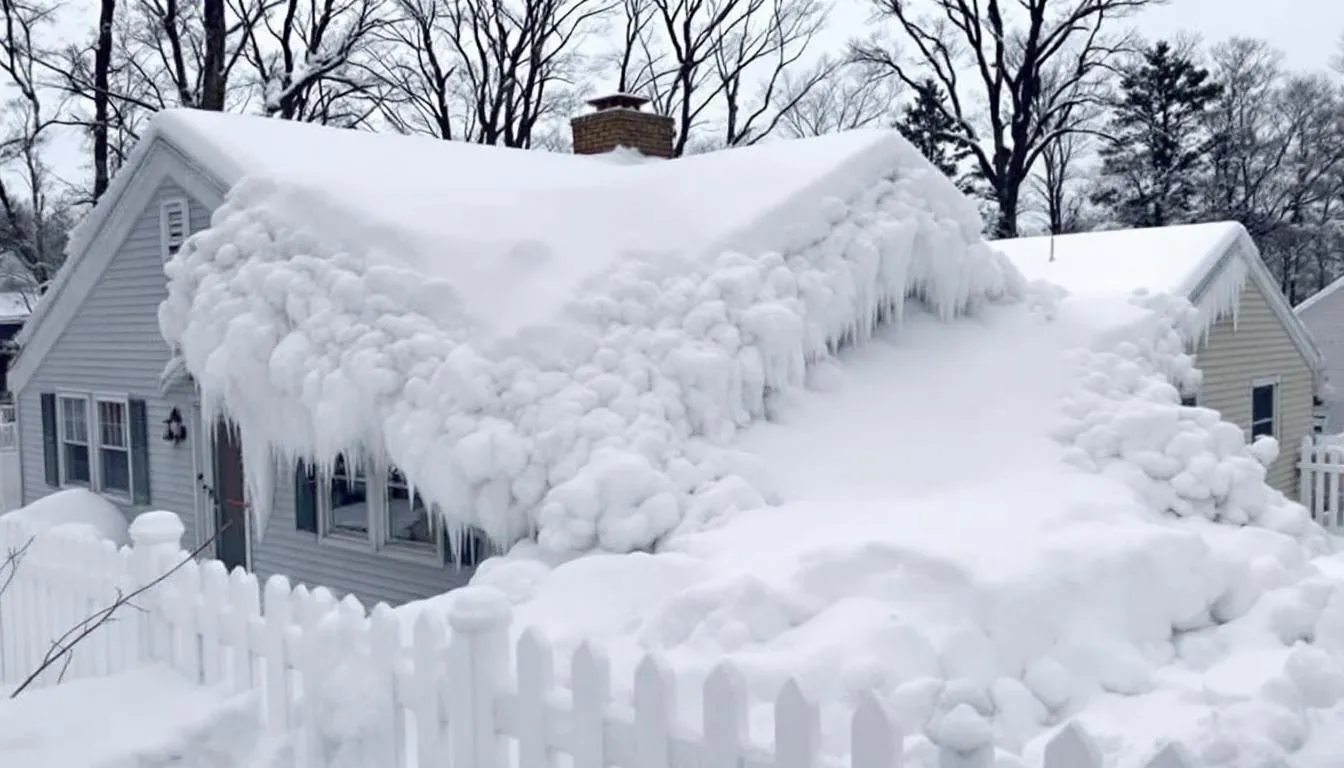Long Island Roof Valley: How-To
Installation Guide and Best Practices
FINANCE YOUR HOME IMPROVEMENT PROJECT TODAY
0% Financing on
Roof Replacements
With nearly four decades serving homeowners under our belt, we’ve built relationships with trusted lenders who specialize in roofing projects. We can connect you with financing professionals ready to help fund your roof replacement project.
When you work with County Roofing, you get only the best. As little as 0% interest on approval for 5 years, easy pay, and the best craftsmanship in the industry.
Key Takeaways:
- The Long Island valley method is a specialized roofing technique that works exclusively with architectural shingles
- The Long Island valley is one of several shingling methods used for roof valleys, each with its own advantages and requirements.
- This method is faster than traditional cut valleys while maintaining excellent weather resistance
- Proper installation requires experienced professionals who understand the technique’s complexities
- Long Island valleys look identical to closed-cut valleys from the ground but use a different installation process
- Climate, roof pitch, and manufacturer requirements all affect whether this method is right for your home

UPDATED FOR 2025
The Long Island Roof Valley Method: A Comprehensive Guide
Ever noticed where two sections of your roof meet at an angle?
That V-shaped intersection is called a valley, and it’s one of the most vulnerable spots on your entire roof.
Valleys handle more water than any other part of your roofing system. When rain pours down, water from both roof planes funnels directly into these channels, creating concentrated flow that tests even the best installation work.
The installation method matters—a lot. Choose the wrong technique or hire inexperienced installers, and you’re looking at potential leaks, water damage, and costly repairs down the road.
Valleys are a common source of leaks when improperly installed, as mistakes in sealing or shingle layering can allow water to infiltrate your home.
The Long Island valley method offers a faster, more efficient approach than traditional techniques.
Developed right here by Long Island roofing contractors, this specialized installation delivers excellent results when done correctly.
But here’s the catch: it only works with architectural shingles, and it demands professional expertise to execute properly.
Below, we’ll dive more into how and when you’d use the Long Island valley method- and why.
What is the Long Island Valley Method?
The Long Island valley method goes by several names—California valley, New Jersey valley, or Tamko valley (named after the manufacturer that includes it in their instructions). It’s a specialized technique designed specifically for laminated architectural shingles.
Here’s how it differs from traditional approaches: instead of cutting each shingle along the valley, installers use a row of inverted shingles bedded in roof cement along the cut line. These valley shingles create a raised guide that subsequent courses follow.
Course lines are snapped parallel to the valley, and roof shingles are placed so their top edge is edge aligned with the valley shingle guide. The center of the valley is used as a reference point for snapping the chalk line and aligning the first course line, ensuring all the shingles are properly positioned.
From the ground, you can’t tell a Long Island valley apart from a standard closed-cut valley. Both create that clean line running down the valley center. The difference lies entirely in how they’re installed—and the Long Island method is significantly faster.
Compared to the closed cut method, which involves cutting shingles from each roof plane and sealing the cut edge with roof cement, or the woven valley, which weaves shingles from both planes and is best for three-tab shingles, the Long Island valley is more efficient for laminated shingles and provides a neat appearance.

The installation process is simple in concept but complex in execution. Valley shingles run vertically up and down the valley with their edges run outward.
Shingle courses from the adjacent roof plane align with these valley shingle edges, creating small triangular exposures that guide water flow down the valley. The lower layer of shingles is critical, as the lowest shingle in the valley sets the reference for subsequent courses.
Each shingle’s nail line must be properly positioned, and the top edge of each shingle is edge aligned with the guide. When working from the first roof plane to the second roof plane, installers ensure the shingles are aligned with the other roof plane as needed.
A utility knife or hook blade is used to trim shingles as needed, especially along the cut edge. For added protection, a metal sheet or sheet metal can be installed beneath the valley shingles, and the drip edge is important for water management at the roof perimeter.
During sealing, a half dollar size dab of roof cement is applied to the lower corner lined with the valley shingle, and roof cement seals the overlaps for weather resistance. The double bead technique can also be used to seal cut edges for extra durability.
How the Long Island Valley Installation Works
The process starts after one roof plane is completely shingled. At this point, your roofing contractor snaps a chalk line two to three inches away from the valley center—the same initial step used for closed-cut valleys.
Here’s where things get different. Instead of laying shingles across the valley and cutting them, the installer applies a generous bead of roof cement along that chalked line. Full architectural shingles are then placed vertically in this cement bed, with their top edges aligned along the chalk line.
These valley shingles essentially create a raised guide. They show subsequent courses exactly where to align, eliminating guesswork and cutting.
When shingling the adjacent roof plane, installers align the lower corner of each course with the edge of the valley shingles. This alignment naturally creates small triangular sections of the valley shingles that remain exposed with each course.
The result? From a distance, it looks just like a closed-cut valley. But the installation is significantly faster because there’s no cutting required—just careful alignment.
Each overlapping shingle corner receives a half-dollar-sized dab of roof cement where it laps over the valley shingle. This creates a secure seal without excessive adhesive that could cause problems later. The measured approach ensures water channels properly down the valley while maintaining the flexibility architectural shingles need.
Why the Long Island Method *Only* Works with Architectural Shingles
This is critical: the Long Island valley method works exclusively with architectural shingles. You cannot use three-tab shingles with this technique, period.
The restriction exists because of fundamental differences in how these shingle types are constructed. Architectural shingles feature multiple layers that create depth and shadow lines. These random-pattern shingles have varying tab heights and widths.
When installed vertically in a valley, that irregular pattern helps disguise the installation method while creating an attractive, natural appearance. The varied dimensions work with the technique rather than against it.
Three-tab shingles tell a different story. They have uniform dimensions and a regular pattern that would look obviously wrong if installed vertically. More importantly, three-tab shingles lack the thickness and structural integrity this application demands.
Thickness matters here. The substantial mass of architectural shingles creates a more effective guide edge for subsequent courses. It also provides better resistance to water penetration. The multiple layers mean that even if water somehow gets past the first layer, additional protection remains beneath.
Advantages of the Long Island Valley Method
So, why use the Long Island valley method over others?
There are a few reasons you might want to consider this vs. another installation method for your new roof:
Faster Installation
Time is money in roofing. The Long Island valley method saves considerable time by eliminating the need to measure, mark, and cut each individual shingle along the valley.
For roofing contractors working on tight schedules, this efficiency translates directly into cost savings. For homeowners, it means reduced exposure to weather during installation and potentially lower labor costs.
Traditional closed-cut valleys require careful measurement and precise cutting of each shingle that crosses the valley. That process demands attention to detail and takes time—especially on complex roofs with multiple valleys. The Long Island method streamlines this dramatically while still delivering professional results.
Clean, Professional Appearance
When properly installed, Long Island valleys are virtually indistinguishable from closed-cut valleys from ground level. The clean line created by aligning shingles with the valley shingle edges provides an attractive, finished look.
This aesthetic consistency matters for homes where curb appeal is important. The valley blends naturally with the rest of the roof rather than creating a visible break in the shingle pattern.
For many homeowners, this visual continuity is preferable to the pronounced metal flashing channels of open valleys. Even though open valleys offer certain performance advantages, some people simply prefer the seamless look.
Weather-Resistant When Properly Installed
Don’t let the faster installation fool you—Long Island valleys deliver excellent weather resistance when installed correctly by experienced professionals.
The combination of properly applied roof cement bedding the valley shingles, careful alignment of overlapping courses, and strategic cement dabs at each corner creates multiple layers of protection. Water can’t easily find its way through.
The raised edge created by the valley shingles actually helps direct water away from potential penetration points.
As water flows down the valley, it’s guided along the valley shingle edges rather than being allowed to work its way under adjacent shingles. This design prevents leaks before they start.
Reduced Risk of Cutting Errors
Traditional cut valleys introduce potential for errors every time a shingle is cut. Inaccurate measurements, improper cutting angles, or inconsistent cut lines can all compromise valley performance.
By eliminating cutting from the equation, the Long Island method removes these potential error points. There’s less room for mistakes that could lead to premature failure or leaks.
This doesn’t mean the method is foolproof—proper execution still requires skill. But it does eliminate one major source of installation problems.
Important Considerations and Limitations
Now that the benefits are clear, let’s talk a bit about the potential drawbacks, or simply things to consider.
Here are a few important things to consider when thinking about the Long Island valley method:
Climate Suitability
The Long Island valley method performs well in many climates, but it’s not universally recommended for all weather conditions.
Regions with extreme freeze-thaw cycles, heavy snow accumulation, or frequent ice dams may be better served by open metal valleys.
Here’s why: open valleys allow water, ice, and snow to shed more freely from the roof. The Long Island method creates essentially a closed valley system, meaning shingles cover the valley rather than leaving exposed metal.
In areas where ice dams are common, closed valleys can potentially trap melting water beneath the shingles more readily than an open valley would. That trapped water can work its way into your home, causing damage.
If you live in northern climates or areas prone to heavy winter weather, discuss climate-specific considerations with your roofing contractor before selecting this installation method.
Requires Experienced Installation
This is perhaps the most critical point: the Long Island valley method demands experience and expertise to execute properly.
While it saves time for skilled professionals, it’s not a technique that inexperienced installers should attempt. The speed advantage only materializes when installers truly understand the method’s nuances.
Improper bedding of the valley shingles can cause them to shift or fail. Inadequate roof cement application allows water penetration. Poor alignment creates uneven water flow patterns. Incorrect corner sealing leads to leaks.
Professional roofing contractors with Long Island valley experience know how to assess whether this method is appropriate for your specific roof configuration, climate, and shingle type.
They understand how much roof cement to apply—enough to secure the valley shingles without creating problems, but not so much that it interferes with proper drainage.
Not Suitable for All Roof Configurations
The Long Island valley method works best on roofs with moderate to steep pitches, typically 4/12 or steeper.
On lower-slope roofs, the method may not shed water quickly enough, potentially allowing moisture to work its way under the shingles.
Very steep roofs create their own challenges. They can make it difficult to keep the valley shingles properly positioned during installation.
This method is also less ideal for valleys where two roof planes of significantly different sizes meet. In such configurations, the water volume from the larger plane can overwhelm the valley, potentially finding its way past the closed valley design.
For these situations, open metal valleys often provide superior performance.
Manufacturer Warranty Considerations
Before choosing the Long Island valley method, verify that it won’t void your shingle manufacturer’s warranty.
While many manufacturers approve this technique, some may require open metal valleys for warranty coverage, particularly in certain climate zones or on specific roof pitches.
A qualified roofing contractor should be familiar with manufacturer requirements. They can confirm whether the Long Island method is approved for your specific shingle product and roof configuration.
This verification step is essential to ensure you maintain full warranty protection for your roofing investment. Don’t skip it.
THE BEST WARRANTIES IN THE INDUSTRY- ONLY 2% OF ROOFING COMPANIES CAN OFFER
25-Year Labor, 50-Year Material Warranty
We’ve met the toughest requirements in the residential roofing industry- and we use only the best materials.
That’s why we stand behind our work with the best warranties in the industry- warranties only 2% of the roofing industry can offer.
Your house deserves the best roofing warranty on the market. Give us a call today and get a brand new roof with a 25-year labor, 50-year material warranty from the best roofing contractor throughout Long Island and New York.
Comparing Valley Installation Methods
As we covered earlier, there are a few different installation methods you can use when it comes to valleys.
Here are the most common:
Open Metal Valleys
Open metal valleys feature exposed metal flashing that creates a clear channel down the valley center. Metal—typically galvanized steel, aluminum, or copper—is installed over underlayment, with shingles stopping short of the valley center on both sides.
This leaves a visible metal channel, usually two to four inches wide. That channel efficiently moves water, debris, snow, and ice off the roof without obstruction.
Open valleys offer several advantages. They shed water faster than closed valleys. They don’t trap debris that can cause clogs. They handle heavy water volume more effectively. And the metal won’t degrade from water exposure the way shingles can, potentially extending valley lifespan beyond the shingles themselves.
The downside? Some homeowners find the exposed metal less attractive than the seamless look of closed valleys. The metal creates a pronounced line across the roof that’s visible from the ground.
Despite these aesthetic considerations, many roofing professionals recommend open metal valleys for their superior long-term performance—especially in climates with significant precipitation or snow.
Traditional Closed-Cut Valleys
Traditional closed-cut valleys involve running shingles from one roof plane across the valley and at least 12 inches into the adjacent plane. Shingles from the second plane are then installed up to the valley and cut along a straight line, typically two inches from the valley center.
The result is a clean line where shingles from both planes meet or overlap slightly. This creates visual continuity across the roof, which many homeowners prefer.
However, it requires careful cutting of each shingle, making installation more time-consuming than the Long Island method. The cut edges of the shingles also run directly down the valley where water concentrates, potentially causing accelerated wear and premature granule loss along those cut edges.
Woven Valleys
Woven valleys involve literally weaving shingles from alternating planes together in the valley. This creates a continuous surface with no visible seam or cut line.
This method works exclusively with three-tab shingles because architectural shingles are too thick to weave effectively. Even with three-tab shingles, woven valleys present challenges.
They’re time-consuming to execute. They’re difficult to install in cold weather. They’re challenging to repair if problems develop. They also tend to not lay perfectly flat, sometimes creating slight bumps or ridges in the valley.
Many shingle manufacturers don’t approve woven valleys for their products. Improper installation can void warranties, making this a risky choice for most applications.
The Importance of Professional Installation
The Long Island valley method may be faster than traditional cut valleys, but that speed advantage only materializes with experienced professionals. Attempting this method without proper expertise can lead to serious problems.
Improperly bedded valley shingles may shift or fail over time. Inadequate cement application allows water penetration at critical junctures. Poor alignment creates uneven water flow patterns that defeat the entire purpose. Incorrect corner sealing leads directly to leaks.
Professional roofing contractors with Long Island valley experience know how to assess whether this method is appropriate for your specific roof configuration, climate, and shingle type. They’ve done this work hundreds of times and understand the nuances that make or break the installation.
They know how much roof cement to apply. Too little, and the valley shingles won’t stay in place. Too much, and it interferes with proper drainage or causes shingles to buckle. There’s a sweet spot that only comes from experience.
Experienced installers also recognize situations where the Long Island method isn’t the best choice. Sometimes an open metal valley provides superior long-term performance, even if you initially prefer the closed valley aesthetic.
A knowledgeable contractor will explain these trade-offs honestly. They’ll help you make an informed decision that balances appearance, performance, budget, and longevity. That’s what you’re paying for—not just labor, but expertise and judgment.
Proper Valley Maintenance
Regardless of which valley installation method your roof features, regular maintenance helps ensure long-term performance. Catching developing problems before they become serious leaks can save you thousands in repair costs.
Annual Inspections
Have your valleys professionally inspected at least once per year. We recommend spring inspections after winter weather and fall inspections before winter arrives.
Professional inspectors can identify subtle signs of wear, shifting, or damage that homeowners typically miss. These early warning signs often indicate problems you can fix inexpensively now rather than expensively later.
Debris Removal
Keep valleys clear of leaves, pine needles, shingle granules, and other debris. This is particularly important for closed valleys like the Long Island method, which don’t shed debris as readily as open metal valleys.
Trapped debris holds moisture against your shingles and can dam up water flow. That standing water will eventually find its way into your home.
Watch for Warning Signs
Be alert for water stains on interior ceilings or walls near valleys. Check for damp spots in attics along valley lines. Look for missing or damaged shingles in valley areas. Notice any visible separation between valley components.
These signs may indicate valley problems that require professional attention. Don’t ignore them hoping they’ll go away—they won’t.
Address Issues Promptly
When valley problems are discovered, don’t delay repairs. Valleys channel large water volumes, so even small issues can quickly escalate into significant leaks.
Prompt professional repairs protect your home and prevent minor problems from becoming expensive emergencies. The cost of fixing a small valley issue now is always less than the cost of repairing water damage to your home’s interior later.
The Best Shingles Don't Mean Much Without a Professional to Install Them
Valley installation represents one of the most critical aspects of any roofing project. These vulnerable areas handle the highest water volumes on your roof, making proper installation technique essential for long-term performance and leak prevention.
The Long Island valley method offers distinct advantages when you need it—faster installation, clean appearance, and excellent weather resistance. But only when executed by experienced professionals who understand its complexities.
Here’s the bottom line: improper valley installation can lead to expensive leaks, interior water damage, and premature roof failure. You need a roofing contractor who’s done this work countless times and knows exactly when the Long Island method is the right choice for your specific situation.
We’ve been serving Long Island for over 35 years. County Roofing Systems brings extensive experience with all valley installation methods, including the specialized Long Island valley technique. Our team has installed countless valleys using this method across Long Island, Nassau County, Suffolk County, and the surrounding New York metro area.
We understand exactly when this method is appropriate for your roof configuration, climate, and shingle type. We know when an alternative approach would serve you better. Our seasoned professionals deliver the precise shingle bedding, proper cement application, and accurate alignment this technique demands.
Don’t trust your roof valleys to inexperienced contractors who may lack the specialized knowledge this work requires. When you need expert valley installation that combines efficiency with proven performance, County Roofing Systems delivers the quality craftsmanship your home deserves.
Contact County Roofing Systems today for a free estimate. Let our experienced team assess your roof, recommend the optimal valley installation method for your specific situation, and deliver the expert workmanship that has made us Long Island’s most trusted roofing contractor for over 35 years.
0% financing
No income check
Up to 15 years
Monthly payments as low as $149
Call or Contact Us Today for a FREE roofing estimate:
Frequently Asked Questions
What makes the Long Island valley method different from other valley techniques?
Unlike traditional closed-cut valleys that require measuring and cutting each shingle that crosses the valley, or woven valleys that interlock shingles from both planes, the Long Island method creates a raised guide edge that streamlines installation while maintaining a closed valley appearance.
Can the Long Island valley be used with any type of shingle?
Is the Long Island valley method approved by shingle manufacturers?
How long do Long Island valleys typically last?
Are Long Island valleys more prone to leaks than other valley types?





